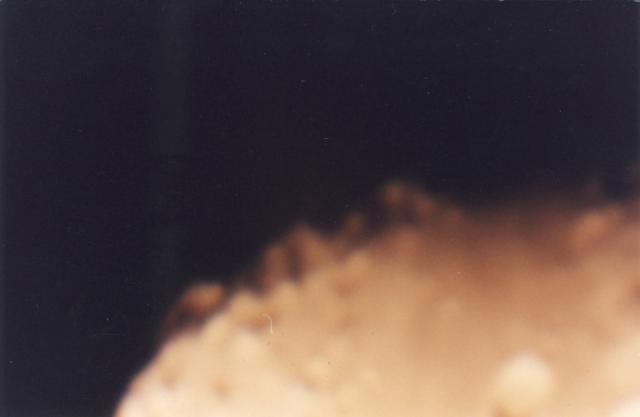Moon/mountain?
This image was taken when I first started imaging thru my 10" Meade LX200 about 7 years ago. That was when I would try anything (and most of the time it was experimental) to get an image. Joe Marzullo will back me up. I usually try the "impossible" or "not likely to work" trial and error routine when it comes to imaging. For example: to take this image of a mountain inside a crater along the terminator of a 3 day new Moon,I added a tele-extender with an eyepiece placed inside, add this to my Pentax K1000 35mm camera, place this setup into/onto my 90 degree diagonal, focus and take an image. At this magnification, the image was visually clear but not on film. It is blurred, contributed by magnification and loss of light . If you step back 3 feet from your screen you will see it 'appear to be clear'. I know that the film was 400 speed and the time of exposure was 10-15 sec's.
Even today using a ccd camera I will attempt to do some "experimental imaging". Only I will not waste a lot of film and wait a week before I see what I had taken. That is the disadvantage of imaging with film. Now the introduction of digital cameras make it easier to image deep sky objects, but somehow the images don't quite seem the same in quality as ccd. It's a matter of personal choice.
Just a note: If you should decide that you would like to take up astrophotography, you had better buy yourself another telescope! Before you know it you will be doing nothing but imaging. If you want to observe you will need two telescopes, one for observing, one for imaging. Believe me if you don't you will find yourself imaging, imaging, imaging, imaging..... got it?




Boy, you are so right about
on Tue, 03/10/2009 - 9:17pm
Boy, you are so right about the second scope, if you catch the imaging bug.. You are going to need it!